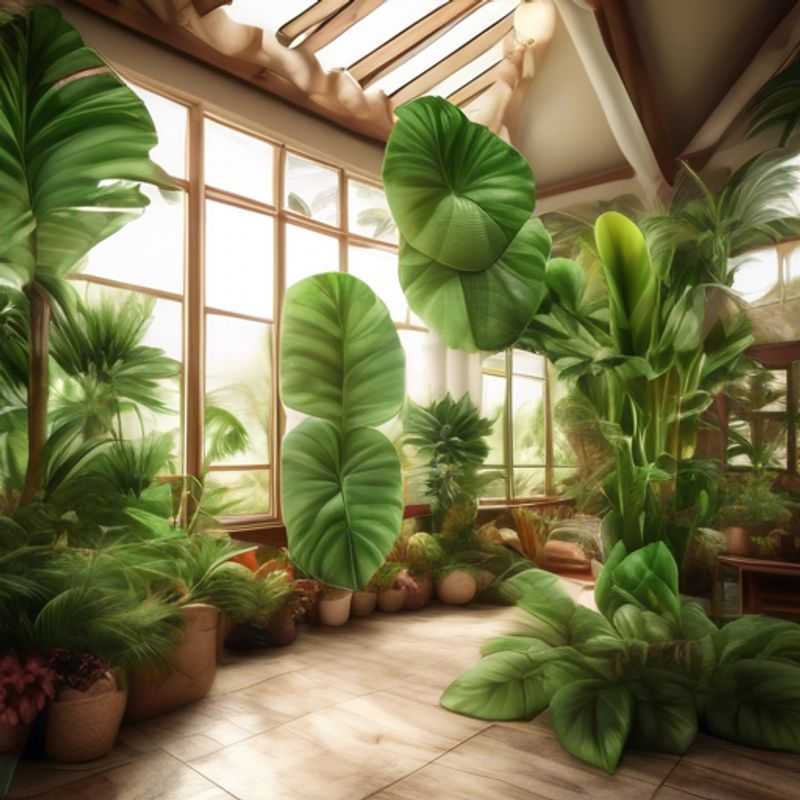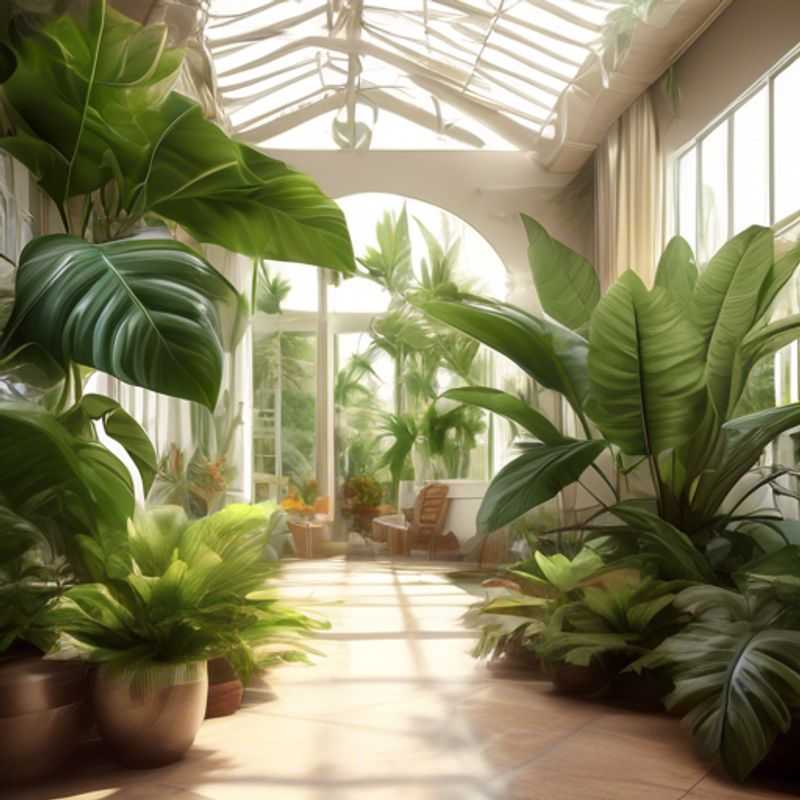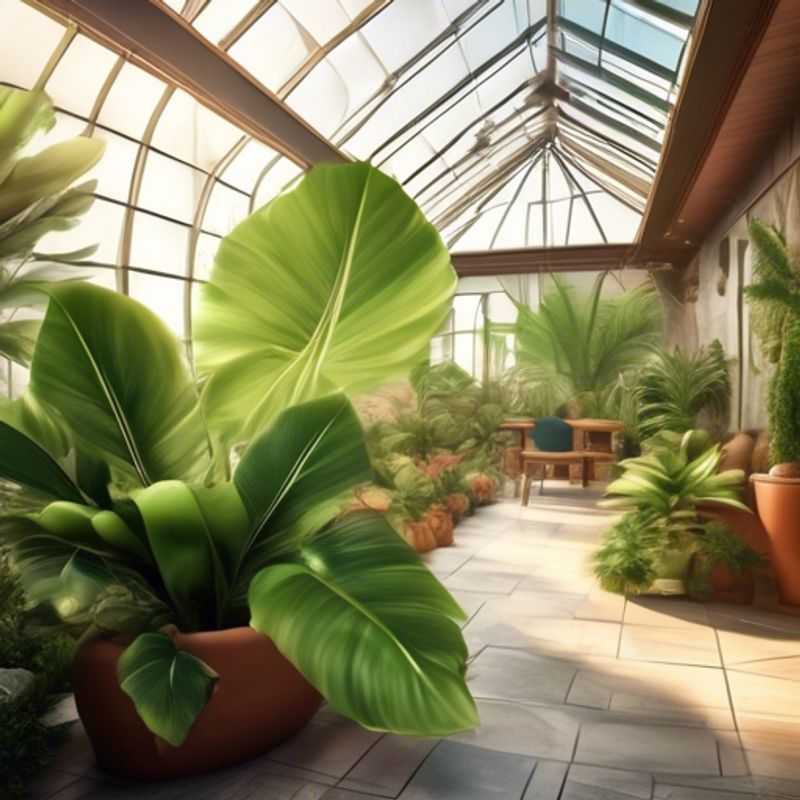Top 4 Must-Knows Before Bringing Home a Big Leaf Houseplant

Light & Watering Requirements: Ensuring Your Big Leaf Houseplant Thrives
Mature Size Matters: Making Sure It Fits Your Space
Care Needs: Pruning, Repotting, and More
Safety First: Toxicity Concerns for Pets and Children
Bringing a big-leaf houseplant home can be a fantastic way to add a touch of nature and visual interest to your space. But before you make your purchase, there are a few key things to consider to ensure a happy and thriving plant companion. Here are the top four things to keep in mind:
1. Understand the Plant's Light and Watering Requirements:

Unlocking Plant Growth: Light & Watering Secrets
Understanding a plant's light and watering needs is crucial for its successful growth. Light is essential for photosynthesis, the process by which plants convert sunlight into energy. The amount of light a plant needs varies widely depending on its species. Some plants, known as sun-loving plants, thrive in direct sunlight for several hours a day. Shade-tolerant plants, on the other hand, prefer indirect light or dappled shade. Low-light plants can adapt to indoor conditions with limited natural light.
Watering requirements also vary greatly depending on the plant. It's important to water deeply but infrequently, allowing the soil to dry out somewhat between waterings. Overwatering is a common problem that can lead to root rot and other issues. To determine if a plant needs water, check the soil moisture with your finger. If the top inch of soil feels dry, it's time to water. Different plant types have different watering needs. Cacti and succulents are more drought-tolerant than leafy greens, for example.
Observing your plants carefully and understanding their individual needs will help you provide the right amount of light and water for optimal growth. Pay attention to the signs of stress, such as drooping leaves, wilting, or yellowing, which can indicate issues with light or watering. With proper care, you can enjoy the beauty and benefits of plants in your home or garden.

Planning for Growth: Researching Mature Plant Size for the Perfect Fit
Before you buy a plant, it's important to research its mature size. This will help you avoid problems later on. Think of it like getting the right size shoes. You wouldn't buy shoes that are too small or too big, right? The same applies to plants!
Imagine a beautiful tree you love, but it grows to be 30 feet tall. If you plant it in a small garden, it could cause damage to your property and maybe even your home.
Many online resources can help you figure out the mature size of a plant. Check out websites like your local nursery or gardening websites.
Remember, it's better to be safe than sorry when it comes to your plant's size. Choosing a plant that fits your space is crucial for its health and your peace of mind!

Plant Care Considerations: Pruning, Repotting, and More
Before you bring a new plant home, take a moment to consider its care needs. This will ensure you're ready to provide the best possible environment for your new leafy friend. Understanding a plant's pruning and repotting requirements is crucial.
Pruning involves removing parts of a plant to promote growth or maintain shape. Some plants need regular pruning, while others are best left alone. Repotting is the process of moving a plant to a larger container. This is essential for plants that have outgrown their pots.
The frequency of these tasks depends on the plant's species, size, and growth rate. Researching your plant's specific needs before buying is essential. There are many online resources and gardening books available to help you.
Consider the time and effort you're willing to dedicate to plant care. If you're a busy person, choose plants that are low maintenance. If you have more time, you can enjoy the rewarding experience of caring for a more demanding plant.

Keeping Your Family Safe: Checking for Toxicity Around Pets and Kids
It's crucial to be cautious when dealing with potentially toxic substances, especially if you have pets or young children. These individuals are more susceptible to the harmful effects of toxins due to their smaller size and developing systems.
To ensure safety, follow these steps:
1. Identify Potential Toxins: Recognize common household products that may pose a risk, such as cleaning supplies, pesticides, medications, and certain plants.
2. Store Safely: Keep all potentially toxic substances out of reach of pets and children. Secure them in locked cabinets or high shelves. Read product labels for storage recommendations.
3. Be Mindful of Ingestion and Contact: Monitor your pets and children to prevent them from ingesting or coming into contact with potentially toxic substances. Be vigilant about spills and leaks, and immediately clean them up.
4. Know the Symptoms: Learn the signs of potential toxicity in your pets and children, such as vomiting, diarrhea, lethargy, difficulty breathing, and seizures. If you suspect poisoning, seek immediate veterinary or medical attention.
5. Have Emergency Information Ready: Keep emergency contact numbers, such as the ASPCA Animal Poison Control Center (888-426-4435), readily available. Having this information handy will save crucial time in case of an emergency.
It's also essential to consider the environment and your personal health when dealing with potentially toxic substances. Wear protective gear, such as gloves and masks, when handling them. Proper ventilation is crucial, especially when using strong chemicals.
Remember, prevention is the key to protecting your family and pets from the harmful effects of toxins. By following these simple steps and remaining vigilant, you can create a safe and healthy environment for everyone.
